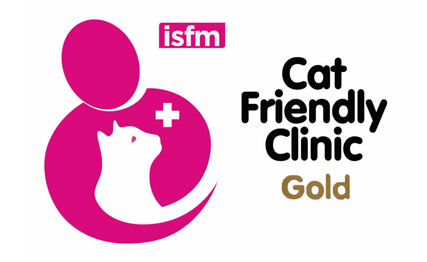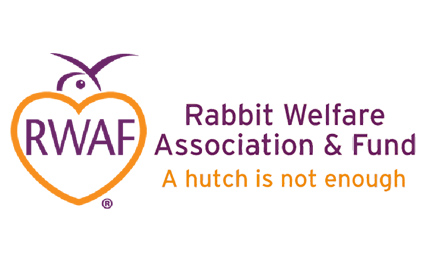24 hour contact: 020 7387 8134
Dentistry
Dentistry services for your pet are available at the RVC Beaumont Sainsbury Animal Hospital. Pet dental care is vital for your pet's wellbeing. Our team is on hand to give you all the advice you need to keep your pet's teeth in a healthy condition.
Signs of dental disease in pets
- Changes in appetite
- Pain when eating
- Excessive drooling
- Bad breath
- Dirty teeth
- Red gums
- Pawing at the mouth
Behaviour changes
Top tips for pet teeth brushing
Brushing is one of the best ways to keep your pet’s teeth and gums healthy. Gradual
• Introduce the toothpaste – Apply some to a finger or toy and allow them to lick it off. Use tasty pet toothpaste and give your pet loads of praise when they do it.
• Introduce something to the mouth – Apply some toothpaste to a fingertip, insert your finger under the lip, and rub your finger onto the outer surface of the teeth. Once your pet becomes more comfortable you can move towards the teeth at the back of the mouth.
• Introduce a toothbrush – A finger brush is good, but a toothbrush is even better. Push the toothpaste down into the bristles so it is not licked off. The mouth should be held and the lip lifted. The teeth should be brushed in a circular motion, brushing both the teeth and gumline. Start with the canines, then the back teeth, then the incisors at the front as your pet becomes more comfortable with the process.
Contact us today if you are concerned about your pet's oral health and need advice
Cat Dental Issues and Services
Cats
Feline dental disease is very common with as many as 85% of cats aged three years or more having dental problems. Dental disease becomes more common and severe as cats age (just with humans). We are happy to advise how to keep your cats smile as healthy and happy as possible. Cats should ideally have their teeth examined by a vet at least once every 12 months, and cats that have had dental problems should be examined once every 3-6 months depending on their condition. Dental disease affects both young and old cats. It is often unnoticed as many cats will continue eating despite having painful mouths.
Common dental problems in cats
- Tooth resorption, where the enamel and dentine of the tooth are eroded leaving a hole, eventually leading to fracture of the crown if left untreated.
- Periodontal disease, where plaque and tartar accumulation lead to painful gingivitis (inflamed gums)
Dog Dental Issues and Services
Dog dental issues and services
Rabbit Dental Issues and Services
Dental problems in rabbits can occur for a variety of reasons including genetic or traumatic causes. However, the most common cause of dental disease in rabbits is an inappropriate diet. This can mean either the wrong sort of food being offered OR the right sorts of foods in the wrong quantities! Rabbits’ cheek teeth grow several millimeters every week. This means providing plant material such as grass and hay (which act a little like sand paper when chewed) is essential to stop overgrowth of their teeth. A lack of plant material in the diet can lead to cheek teeth that are too long which lead to pain, reduced appetite, weight loss, abscesses and eye conditions. Too little fibre in the diet can also lead to fatal gut problems and diarrhoea. Please read the hand out on how to feed your rabbit for further information (link to feeding handout).
Signs that your rabbit may be suffering from dental problems include:
• Reduced appetite / favouring softer food items
• Reduced droppings
• Weight loss
• Drooling
• Discharge from the eyes
• Swelling on the face
• Reduced grooming
• Not eating their caecotrophs (night faeces)
If in any doubt, it is always best to book in for a full health check with one of our Exotics team as problems can be very painful and progress quickly leading to serious illness. A health check will include a full discussion about your rabbit’s set up, diet, health concerns and a full physical examination including looking inside the mouth. However, even with the most well-behaved rabbits, we cannot completely examine every tooth conscious, so if in doubt we may recommend a full dental examination under sedation with imaging if needed. At this point, any dental overgrowths can be corrected with a small burr and any loose or infected teeth can be removed. Most rabbits will be kept in hospital for one night following the procedure for ongoing supportive care and to make sure that they are eating well and producing plenty of droppings before their return home!
If your rabbit is diagnosed with dental problems, regular dental work is usually necessary to keep the teeth in line and prevent painful spikes and ulcers. Some animals will also need ongoing pain relief if their problems are severe.
We recommend dental checks every 6 months for most pet rabbits as dental disease is such a common problem and more easily treated if detected at an early stage. More frequent checks may be necessary for certain individuals, so if in doubt just ask one of our team for advice.
Small Mammal Dental Issues and Services
Ferrets
Ferret teeth are very similar to cats and dogs and consist of Incisors, long canines, premolars
To help prevent dental problems, your ferret's teeth should be brushed regularly using a toothbrush designed for cats and dogs and special pet toothpaste. Do not brush your ferret’s teeth with human toothpaste, as this can be harmful.
Small mammal dental issues
Guinea pigs, chinchillas and degus all have constantly growing incisors and cheek teeth similar to rabbits, making them susceptible to much of the same dental issues
Pet Reptile dental issues and services
Dental disease might not seem the biggest issue for a pet lizard, but can be a common problem for some species.
One recent survey in fact revealed that up to 35% of bearded dragons seen by vets had dental abnormalities.
Teeth in lizards can vary considerably depending on species and feeding habits, but animals can generally be split into two groups; those that have pleurodont dentition such as iguanas and monitor lizards, and those that have acrodont dentition such as bearded dragons, water dragons and chameleons.
Pleurodont teeth are attached to the inner side of the jawbone and are shed and replaced regularly throughout the animal’s life.
Acrodont teeth in contrast are firmly attached to the crest of the jaw bone and are rarely replaced. Consequently any damage or disease of the teeth can be a serious problem for this latter group of lizards.
What causes reptile dental disease?
It is generally thought to be a disease of captivity associated with inappropriate diets such as too many soft fruits or waxworms.
Long term, these diets appear to result in the development of plaque, subsequent build up of bacteria and then gingivitis and calculus formation not dissimilar to dental disease in humans.
Dental problems may be a consequence of trauma and subsequent infection. Prompt treatment is required in these cases to prevent significant pain and spread of infection.
However, unfortunately animals may not show signs of a problem so owners are often unaware of the extent of the disease until it reaches a fairly advanced stage.
Prevention of reptile dental disease:
This usually involves dietary changes to reduce bacterial build up and increase removal of plaque. Feeding of invertebrates such as crickets and locusts rather than softer mealworms or waxworms has been suggested to help with this, in addition to ensuring that sugary fruits and vegetables are minimised. These dietary changes have the added advantages of helping to prevent weight related issues such as fatty liver, heart disease and even joint problems. SDental problems are completely preventable in pet lizards and regular dental treatments should not be necessary.
The key is detecting problems at an early stage so that easy adjustments can be made



